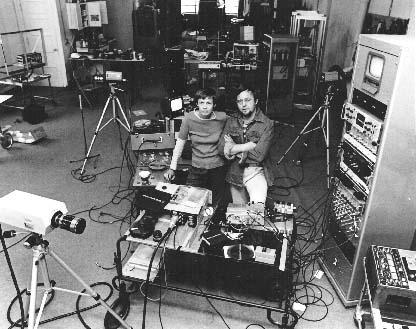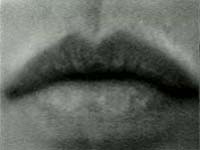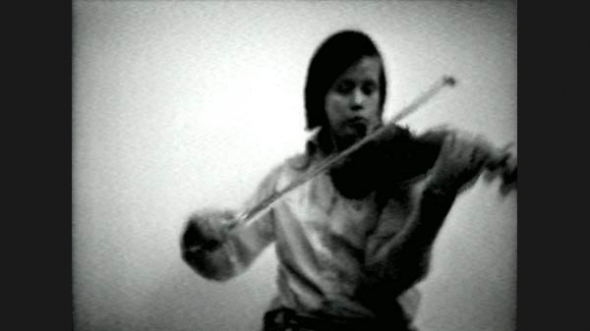Histoire(s) Du Video
Seminal video artists Steina and Woody Vasulka recently presented a rare retrospective screening of their work at the LUX centre. Matthew Noel-Tod appraises its relevance in the age of Mini DV, and finds similarities with Godard's Histoire(s) Du Cinéma
For three days, the audiences at the Vasulka Video weekend in London were given the history and the digitally remastered works of two of the pioneers of video art, Woody and Steina Vasulka.
The Vasulkas started making videos in 1969 with the availability of the first portable video camera the primitive Sony Portapak, which, unlike many film cameras of the time that required a separate sound recordist (not to mention the laborious and costly celluloid process), differed because it combined sound and image in the single video signal and on a single tape. The unprecedented freedom that this recording technology gave artists over 30 years ago is perhaps hard to appreciate today for the Mini DV generation, but the Vasulkas’ tape Participation (1969-71, 63 mins), swaggers so convincingly with the air of liberation that the evidence is hard to refute. Participation is an anthology of performances featuring, among others, Jimi Hendrix, Jethro Tull plus Warhol Factory regulars Candy Darling, Eric Emerson and Taylor Mead. The tape comes as an unexpected introduction to the Vasulkas’ oeuvre for the audience who are expecting 'the fizz and crunch of the analogue age', as promised by the advertising. As Woody explains though, the Vasulkas’ work always had two threads, one of recording reality, or ‘registering reality’, and the other being a systematic technological experimentation with the machines that create video signals.

The most revolutionary moment on Participation comes during a rowdy, televised argument between members of Warhol’s gang on the David Susskind Show. As the former stars of Warhol’s films claw over the seats at each other, the desperate Susskind goes to the commercial break, while the Vasulkas’ camera keeps rolling. There is momentary confusion as we see Susskind relax in to his armchair, regardless of the Factory starlets going ballistic on each other. This simple but effective crossover between two realities – one in the TV-governed time-space and the other when the cameras are supposedly turned off – is genuinely transgressive.
> Let it be, Vasulkas, 1970......................................................

In the work presented in the following day’s Video Gallery screening at Candid Arts Trust, Steina’s video Let It Be (1970, 4 mins) shows a close up of her mouth lip-syncing to the Beatles' song. This mesmerising piece is simplicity in itself, but also contains the fundamental Bazinian refusal of constructed filmic truth: there are moments when the camera drifts in and out of focus on her lips, or when she gets out of sync with the words, while we are reminded that the sound is coming from the room she is in by the slight phase distortion through the Portapak microphone. This deconstruction of the cognate visual and audio elements of video, starting in videos such as Participation and Let It Be is what defined the Vasulkas’ subsequent development, although later work was to be much more technology led. In 1971, together with Andy Mannick, the Vasulkas co-founded The Electronic Kitchen in New York, an electronic laboratory for experimentation with sounds and images. Videos from this period include Home (1973, 17mins), an electronically processed still life; the extraordinary Golden Voyage (14min) where an animated baguette crosses a hallucinatory universe and then appears to make love to a naked woman (as Woody says, this was the period when LSD was still a big part of alternative society) and the hardcore flicker-film type experience of Noisefields (1974, 12mins), which is reminiscent of iTunes reprogrammed in the basement of legendary Berlin techno club Tresor. Video artists take note - a true indication of awe comes during the screening of this piece, when an entranced woman in the audience stands up and punches the air in ecstasy, yelling ‘Yeah!’ to the screen.
> Art of Memory, Woody Vasulka,1987.....................................................

The more recent work by the Vasulkas (of which there is much) made after this halcyon period in the 70s is tainted with the air of frustration and disappointment that seemed to arrive with the digital age. The lesson was that technology is a hard master. Woody describes a decade spent developing and building the Digital Image Articulator, a digital device that essentially generated a shuffling grayscale mosaic of black and white pixels. Steina attempts a somewhat unsuccessful new performance of her MIDI violin piece Violin Power and is let down by the foibles of her laptop and her erratic MAX/MSP/Jitter-like software. Although Woody's philosophical doubt, as he recounts his nightmarish networked-automata museum show in Japan in the 1990s, The Brotherhood, is palpable, his dismay is less convincing on the subject of his ‘failed’ video work, Art Of Memory (1987). This was an attempt to make a video with none of the conventional grammar of filmmaking. The overlapping 3D-wrapped images and slide-in and -outs to avoid straight cuts may look dated and hard-won in our era of After Effects, Final Cut Pro and ideological apathy in art. Still, Woody’s one-man attempt at tackling every history that has fed into his life (including cinema, video, digital, 20th Century conflict and forced migration of population) with a single videotape seems inspiring and brave, in a way that is perhaps only seen in Godard’s Histoire(s) Du Cinéma.
The Vasulkas seem somewhat at odds with making their art in the contemporary world, where computer technology has long overtaken the processes and simplicity that made their early work so decisive. They inhabit a world where Apple can turn your pioneering life’s work into an i-keystroke and you never again interact with technology on your own terms; but for raw inspiration and infectious experimentation in video, this weekend’s viewing was unmissable.
Vasulka Video: A Weekend with Two Pioneers of Electronic Art was presented at LUX, London, on 5-6-7 March 2004
Mute Books Orders
For Mute Books distribution contact Anagram Books
contact@anagrambooks.com
For online purchases visit anagrambooks.com







